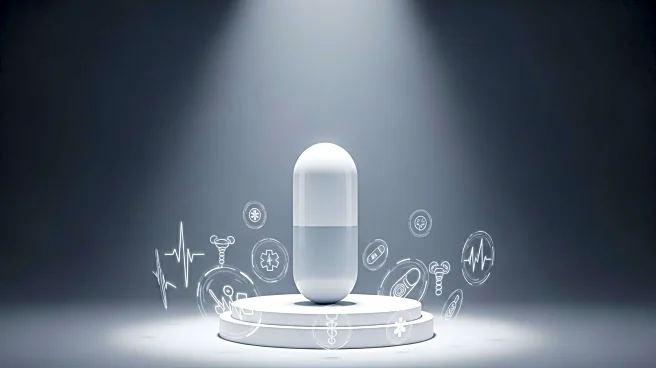What is the story about?
What's Happening?
AstraZeneca's hypertension drug, baxdrostat, has demonstrated positive results in a Phase 3 trial involving patients with resistant hypertension. The Bax24 study showed a statistically significant reduction in ambulatory 24-hour average systolic blood pressure compared to placebo at 12 weeks. This follows previous successful trials, positioning baxdrostat as a potential first once-daily oral aldosterone synthase inhibitor. AstraZeneca aims to file for regulatory approval this year, competing with Mineralys Therapeutics, which is also advancing its candidate, lorundrostat. Baxdrostat's efficacy could make it a $5 billion-a-year product, addressing the unmet needs of patients unable to control high blood pressure with existing therapies.
Why It's Important?
The successful trial results for baxdrostat highlight its potential to transform hypertension treatment, particularly for patients with resistant forms of the condition. Hypertension is a major health issue, affecting millions globally and contributing to cardiovascular diseases. AstraZeneca's development of baxdrostat could offer a new therapeutic option, improving patient outcomes and reducing healthcare costs associated with hypertension-related complications. The drug's potential market impact underscores the importance of innovation in addressing chronic health conditions and the competitive landscape in pharmaceutical development.
What's Next?
AstraZeneca plans to proceed with regulatory filings for baxdrostat, aiming to bring the drug to market as a novel treatment for hypertension. The company is also exploring additional indications, including chronic kidney disease and heart failure prevention, in combination with its SGLT2 inhibitor, Farxiga. As AstraZeneca advances baxdrostat, it will face competition from Mineralys Therapeutics, which is also preparing regulatory submissions for its hypertension drug, lorundrostat. The outcome of these filings and subsequent market entry will be closely watched by stakeholders in the healthcare and pharmaceutical industries.
AI Generated Content
Do you find this article useful?














